#Megadungeon
Explore tagged Tumblr posts
Text
On the Ruins of Giants
A small RPG about a big, decaying world
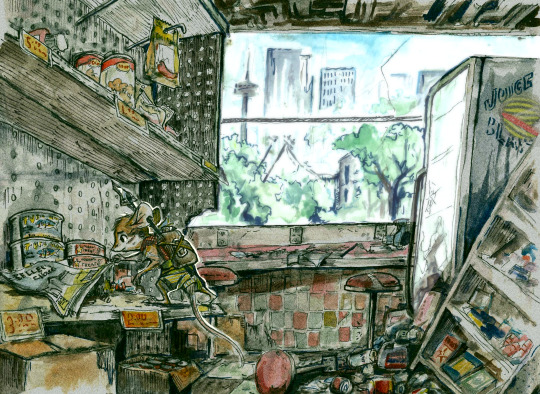
Art by @bedupolker / @bedupolker.bsky.social
Well, I went and got big art for a project I was only fiddling with so far, so I guess I need to make a proper post for it
Well, I went and got big art for a project I was only fiddling with so far, so I guess I need to make a proper post for it
Being small mice exploring the decaying ruins of the human world
Building up your colony so that it can survive
Traversing dangerously decayed and overgrown environments, as well as figuring out how to get your salvage back home
Dealing with all manner of mutants as well as seemingly unremarkable threats magnified by your stature
I have a lot of mechanic ideas that need testing (What dice to use, combat and positioning, character creation, exploration and more), and to do that I need to actually write them down outside of jot notes, so i guess I should get back to that
I have a few other posts about it (check the tags) but that's where I'll leave it for now. Little mutated lab mice in a big, hostile world. Coming whenever my ADHD lets me make progress on it. If you want to keep up, follow me here or on my bsky I basically never post unless it's about a project :V
One final thing, there's actually two versions of that pic, the original and one digitally tweaked, which do people like most?
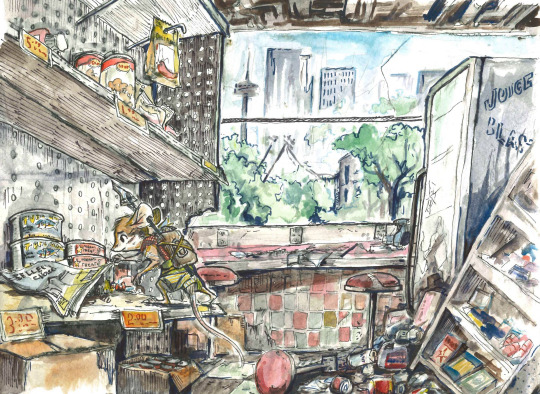

#on the ruins of giants#rpg#ttrpg#game design#ttrpg community#scifi#game dev#indie rpg#mouse#megadungeon#mouse rpg#mouse ttrpg#mice#mice rpgs#watercolor
621 notes
·
View notes
Text
Since I've had a few people asking about megadungeon stuff recently, and I am an avowed megadungeon megafan, I thought it might be fun to walk through an actual example of megadungeon play that exemplifies what I like best about it.
This post is going to be the first in a series talking about a room from a megadungeon that I ran over 20 years ago (brushing past that fact quickly lest the horrors set in.) It was a major room, probably the most complex and important in the dungeon, and the players passed through it frequently throughout the campaign. In this post I'll introduce you to the room, and then in later posts I'll talk about what it does well and how to use that lesson more generally. Below the cut is a reproduction of the map as I remember it.

Without getting into The Lore too deeply, some dwarves accidentally dug into hell, as one does. Classic trope, nothing wrong with using them. They quite sensibly shut the mine down and sealed if off, but word got out. A human king heard about this, and took over the mine, expanding it into a temple complex to curry favour / barter with hell. It went badly, as such things do.
This concourse connects several wings of the dungeon, spanning several floors. An enormous devil face statue emerges from the northern wall, above the second floor balcony and below the fourth, and a column of light shines through a hole in the ceiling onto the center of the floor. Several floors of balconies overlook the chamber, though the stairs to the fourth floor balcony have long since collapsed.
This chamber was not too far from the main entrance, with the party first encountering it on their second delve into the dungeon, though it would take two more delves for them to gather the courage to enter it. At the time they first encountered it, it was swarming with imps and other little devils worshipping the big face.
I'll summarize the key:
A. Hallway from the Entry Chambers, the first and easiest section of the dungeon.
B. Doorway to the Pilgrim's City.
C. Doorway to the Unholiest of Unholies. Sealed and warded against simple spells.
D. Doorway to the Old Dwarven Quarters.
E. Doorway to the Nobles' Section. Barred from the far side.
F. Portcullis to the Pilgrim's City. The mechanism has rusted out and no longer functions.
G. Doorway to the Halls of the Clergy.
H. Doorway from the King's Inner Sanctum.
I. Doorway to the Archive.
J. Doorway to the King's Inner Sanctum, locked.
K. Doorway to The Indulgences.
Stairway from floor 1 to floor 2.
Light from the hole in the ceiling.
Broken stairs from floor 2 to floor 4.
Big ole devil face. Its eyes are a one-way illusion, allowing anyone within the face to view the room below.
Okay that's a lot, thanks for sticking it out. While I don't want to wander too far off topic into the rest of the dungeon, I'll just briefly note that the Pilgrim's City and Old Dwarven Quarters are easier sections of the dungeon, the Nobles Section and Halls of the Clergy are slightly more difficult, the King's Inner Sanctum, Archive, and Indulgences are very dangerous, and the Unholiest of Unholies is, as one might expect, where the worst things (and best loot) in the dungeon are. This was 2nd edition AD&D, so there was not a presumption of fights being balanced, and traipsing through more dangerous sections of the dungeon at lower levels wasn't uncommon. The players also understood the varying levels of danger fairly implicitly, since the custom at the time was that any time you went a level further away from whatever the ground floor was, things got more dangerous. The only exception to this is the Unholiest of Unholies and I think we can agree that when it's beyond a magically sealed door under a giant devil head the danger is telegraphed.
Next post I'll start talking about what made this room work so well in practice.
783 notes
·
View notes
Text

Moria: The Dwarven City, supplement for Middle-Earth Role Playing, Rolemaster, or other RPGs (Iron Crown Enterprises, 1984, "Cover art from the motion picture The Lord of the Rings")
#Moria#JRR Tolkien#Tolkien#The Lord of the Rings#LotR#MERP#Middle Earth Role Playing#Rolemaster#Khazad-Dum#dungeon#megadungeon#fantasy#fantasy RPG#ICE#Iron Crown Enterprises#1980s
164 notes
·
View notes
Text

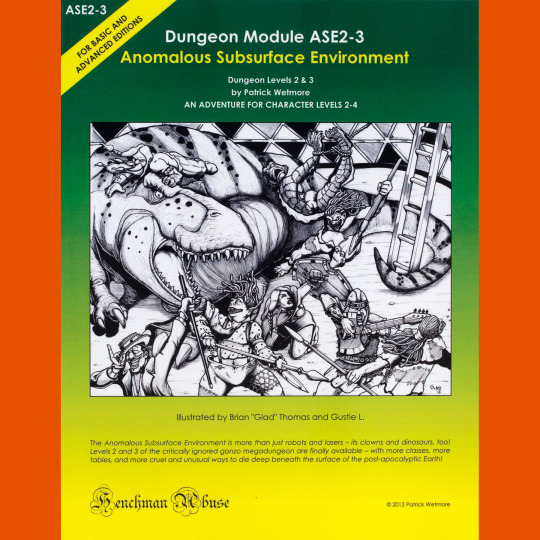

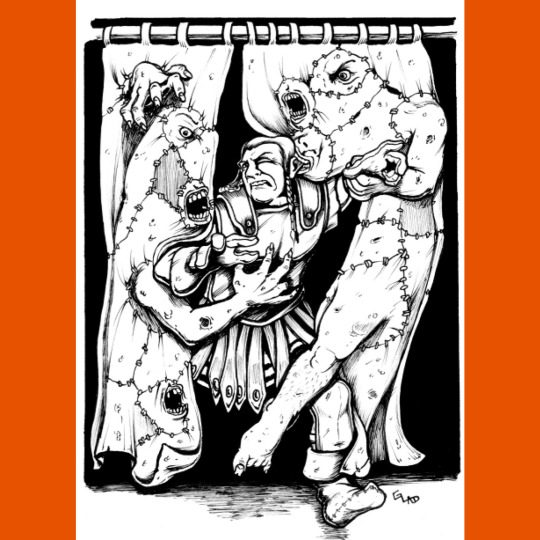
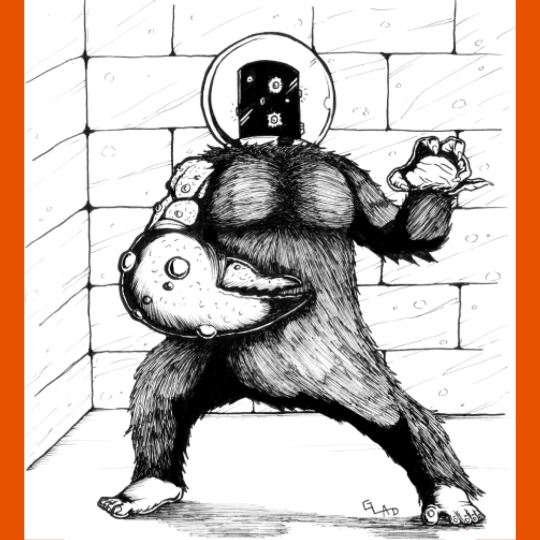


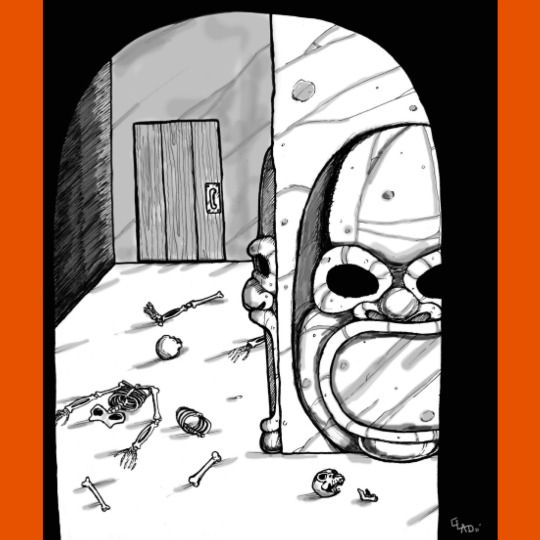

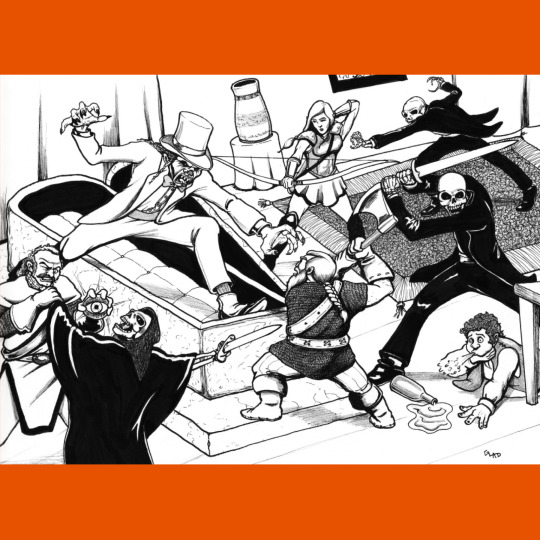
Anomalous Subsurface Environment takes a novel approach to contending with the inherent irrationality of the dungeon by embracing it. There’s no secret at the center that makes it all suddenly make sense (in part because after two volumes — ASE1, 2011, and ASE2-3, 2012, both print-on-demand — the dungeon remains unfinished, but still, the introduction is pretty clear that there are no revelations to be had).
The dungeon came into existence spontaneously and persists thanks to a maintenance staff of self-created elemental spirits and defies any further explanation. The ASE was discovered in our own cyberpunk future by a megacorp that built large facilities around the ASE to research and extract profit. At some point, an unknown disaster forced the megacorp to seal the complex, trapping staff and resources inside. Fast forward 4,000 years into a retro-future resembling Thundarr the Barbarian, where the detritus of high technology mixes with magic and the ASE is, mysteriously, open for exploration once again. Thus, ASE is both as bizarre as its freeform funhouse ancestors but benefits from the narrative framework of modern megadungeons like Stonehell.
The central implication is that the system of the universe wanted dungeons to exists so badly that it just summoned one into existence, complete with all the silly game logic that had developed over the last 40 years, to see what would happen. The book present the ASE as the product of indomitable will that lacks driving intelligence. This is both brilliant and deeply, deeply weird. Watch out for the cornstalk warriors.
#dungeons & dragons#tabletop rpg#roleplaying game#d&d#rpg#ttrpg#MegaDungeon#Anomalous Subsurface Environment
187 notes
·
View notes
Text

Brinefathom Caves Level 6, Week 8
6.76: The False Demilich
6.77: The Lake of Tears
6.78: The Blood Basin: Basin stained with old dried blood. Refilling it (which requires draining a medium creature or equivalent) causes the wall the basin is on to swivel, opening a one-way secret door for one dungeon turn. Empty.
6.79: The Hot and Cold Doors: Southern half of the room is bitingly cold, northern is baking hot. Metal slab doors only stay open as long as they maintain the opposite temp (hot for southern and cold for northern). Empty.
6.80: The Heavy Weapons
6.81: The Infernal Escape
6.82: The Hanging Doors: Walls painted with frescoes of hanged pirates. Gibbet extends between northern and western doors, which have no keyhole or handles. If a corpse is hung from the gibbet’s noose (regardless of whether it was killed by the noose or not) the door that it faces opens. Empty.
6.83: The Truthful Guards
6.84: The Frozen Leviathan
6.85: The Truthful Dead: Floor carved with runes: zone of truth on entire room. Corpses of two anchor devils who appear to have frozen to death. Empty.
6.86: The Wall of Masks: Northern wall completely covered in devil masks that laugh and jeer when mortals approach them. Ten of the masks conceal buttons, which, if pressed in the correct sequence, open the secret door to 6.87. Only Ukarith knows the correct order, (1-6-8-5-4-9-7-10-3-2) but it can also be gleaned from touching the ice in 6.84. A creature who presses the buttons in the incorrect order must succeed at a Wisdom saving throw or fall prone and become incapacitated and unable to stand for one minute as they’re wracked with laughter. Empty.
6.87: Ukarith's Secret Shrine
6.88: The Tree of Hearts' Desire
(Non-key rambling under cut)
Aaaaand that's a wrap for 2024! Thank you to everyone who supported this project, especially @aranov, @bcswowbagger Decoder13 (no tumblr) @fishdavidson, @lunaofthemiste, @skinslip, @spewagepipe. Your comments, ideas, playtesting, etc. mean the world to me, and you made doing this much more rewarding.
I should have a post about what's next for the caves up in a day or two. Happy new year, mateys!
22 notes
·
View notes
Text
The Ruins of Castle Gygar
NOW ON KICKSTARTER!

The Ruins of Castle Gygar is a 360+ room megadungeon designed for old school tabletop RPGs. It is designed with Old-School Essentials in mind but will play great with any OSR B/X compatible game, your favourite retroclone, five-ee, or fantasy heartbreaker.
The Ruins of Castle Gygar began as a #Dungeon23 project that I completed over the length of 2023. The #Dungeon23 project was an initiative to write one dungeon room a day every day for 2023, and I completed it! I then spent the next six months digitizing my notebook, refining it into a useable, runnable megadungeon.
Castle Gygar is inspired by many things, such as the original Greyhawk dungeon by Gary Gygax, the structure of the megadungeon in Nethack, as well as the maze structure dungeons of the classic Wizardry computer games.
PLEDGE NOW! Or, click below for more info!
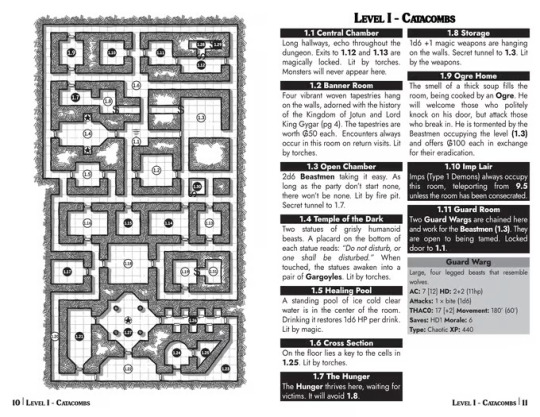
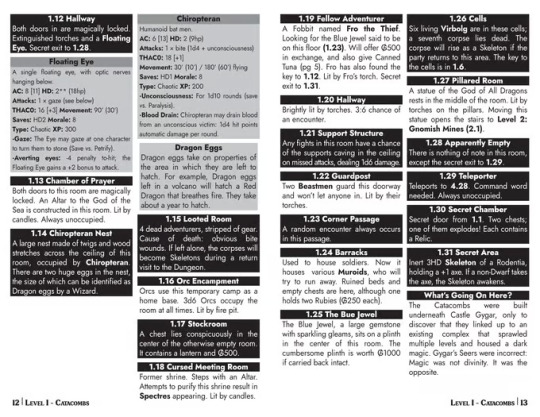
Download a free preview here!
The Ruins of Castle Gygar will be a 64 page, 8.5" x 5.5" black-and-white staple bound zine-style book with laminated soft-touch cover, printed in the USA by Mixam. It'll be on 60lb paper so it'll be nice and thin. We'll be shipping it from the United States, and each order will be hand-packed with love.
The book is written by Onslaught Six and features cover art by Chaoclypse and will be edited by Ennie award winner Roz Leahy. The book currently has all text written and layout conventions established, and awaits editing, a layout pass and (depending on budget) additional art. Then we'll be able to go to printing and distribution.
Thank you so much for your support. We wouldn't be able to keep making TTRPG stuff without you. We sincerely thank each and every one of you who's ever donated to our Kickstarters, or bought our books. Your support is vital to us continuing to make dope shit.
PLEDGE ON KICKSTARTER NOW!
26 notes
·
View notes
Text
AVE NOX & BEYOND THE PALE
Two HUGE kickstarters that I am really excited about today! I've gotten to watch their development from early on and I can say that I've not been more excited for any TTRPG books for quite a long time!

Ave Nox, a system neutral megadungeon of Forgotten history and disaster deep in the dark of the Earth!
https://www.kickstarter.com/projects/appalachia-gothic/ave-nox by @feralindiecharlie

Beyond the Pale, a horror Osr adventure, inspired by Jewish folklore and mysticism!
https://www.kickstarter.com/projects/lost-pages/beyond-the-pale-a-folktale-adventure by Yochai Gal, @sheydgarden, Shari Ross, Eli Seitz and Paolo Greco as well as an extensive team
#ttrpg community#ttrpg#indie ttrpg#roleplaying games#ttrpg design#ttrpg art#ttrpg stuff#megadungeon#dnd#osr#dungeons and dragons#adventure#jewish folklore#illustration#character design#jewish art#jumblr#beyond the pale#yochai gal
121 notes
·
View notes
Text

The 1st level of the Undermountain megadungeon, at least according to The Ruins of Undermountain boxed set (TSR, 1991).
Although Ed Greenwood, the creator of Undermountain, provided TSR with his original maps, they decided not to use them.
Not that the dungeon is completely original; eagle-eyed grognards might spot dungeons from B1 In Search of the Unknown (TSR, 1979):
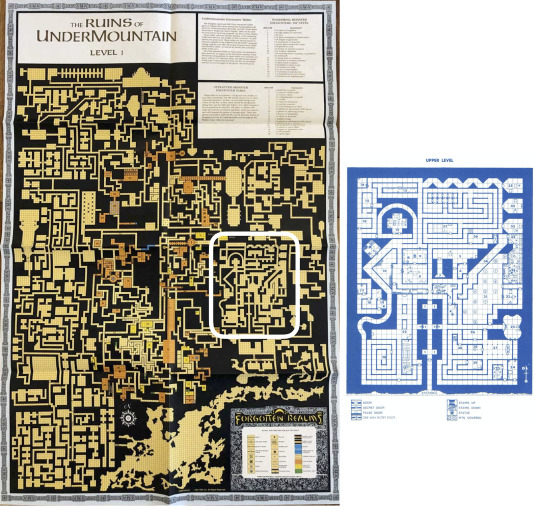
B3 Palace of the Silver Princess (TSR, 1981):

and B5 Horror on the Hill (TSR, 1983):

[Source: Unvisible Citadel - Undermountain Map Origins]
#rpg#dungeons and dragons#dnd#maps#dungeon maps#forgotten realms#waterdeep#undermountain#megadungeon
82 notes
·
View notes
Text
I had an idea for a variant on Pf2e leveling rule that makes bookeeping a little bit simpler and allows for more dungeon crawl style progression - instead of giving out XP by milestone or per encounter, use the Treasure by Level table - once the requisite permanents/consumables have been obtained (or currency equivalent), the party levels up. Could be fun for a megadungeon with a variable amount of encounters due to wandering monsters & restocking.
Come to think of it, RAW this is theoretically what milestone leveling *is* in Pf2e - the game balance breaks down if the leveled treasure doesn't keep pace with difficulty. In practice, milestone leveling in PF2e tends to cause long-term problems, as parties not keeping track of XP are unlikely keeping track of treasure, which is already a much bigger ask!
Of course, this isn't an issue if encounter balance isn't a concern, but in which case PF2e may not be the right system 🤔
5 notes
·
View notes
Text
youtube
⬆️ watch me attempt to catch up on my room-a-day #dungeon23 megadungeon lol
⬇️ also: the project has a name and we're going to be printing it as both a book and a BIG poster! follow on kickstarter to get notified when the project launches next month!
17 notes
·
View notes
Text
Mega Dungeon Meandering - Episode 1 - Stonehell - Surface Level
Mega Dungeon Meandering is a deep dive into one of the best reviewed mega dungeons of all time, Stonehell: Stonehell Dungeon is a classic-style mega dungeon, filled with enough monsters, traps, weirdness, and treasure to keep you gaming for a long, long time. Explore over 700 rooms, encounter more than 40 new monsters, and discover 18 mysterious magical items — and that’s just in the first…
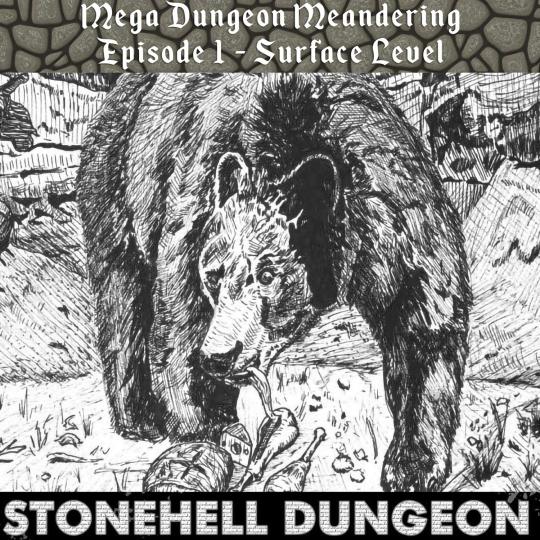
View On WordPress
5 notes
·
View notes
Text
Game Progress and Life Update
Well, my players have actually made it into the mega-dungeon that the whole game is based around, so that's good
-It started with them entering a dark and silent hall from a breach in the wall, after over half an hour of very claustrophobic caving -The area seemed to be a long abandoned market, with prebuilt stalls... and also some hungry Vurmoles prowling the area. -Along the back wall was a strange art piece, a massive carving that seemed to lionize a sun headed figure
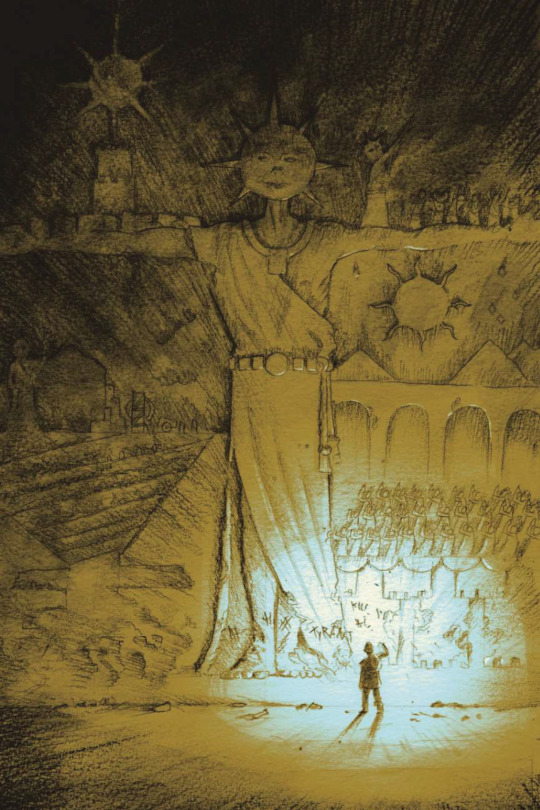
-Moving further in they discovered several mysteries. A odd geometric sculpture, a grotesque face of a sun made of bronze and set into a wall, a elevator shaft(?) that vanished into the darkness -To the west was only a immovable vault like door, so they went east. Out of the darkness loomed a defaced statue of a sun headed man, surrounded by lumpy piles of rags... till some began moving. -While frail, the not quite human lurkers in darkness were still a danger with their stone sickles, and beyond them was another locked door. -After more than a few throws of the grappling hook, they managed to squeeze through the guard windows above the gate and open them from within -Beyond was a more lively, and dangerous place. Two more of the strange people sparing, a fish faced master of a decaying armoury, a warehouse with a operating lift, and a great bronze gate with no handles
Exploring the first floor is going faster than I thought, but the dungeon has yet to come to life to.
On to life stuff
January was shit!
Was sick all month essentially, only found out with what partway through, walking pneumonia, so I got basically nothing done on the personal work side. On the Ruins of Giants has languished all the while.
Applied to several jobs and got an interview, the first one all search! And then a week later I got told no thanks. So again, zero progress.
February is soon and this is looking a lot like last year, but we must endure and keep moving. Hopefully back to working on personal stuff.
33 notes
·
View notes
Note
What's your preferred system for megadungeon play? I tried to make one in 5e and while it was fun I really had to fight 5e's rules to make it work
Yeah, I had a similar experience when I ran a 5e megadungeon, and as I've mentioned in a few posts I've run Abomination Vaults in pathfinder 2e, and I think that system isn't good for megadungeons either.
Broadly, I think for megadungeons, I want a couple things from a system:
First, I want combat to be fairly quick. I think room restocking and wandering monsters are important, and I don't want to feel like I'm bogging things down with extra combat. I want easier combats to resolve in 5-10 minutes, not 20-30.
Second, I want meaningful attrition. If there are going to be easy fights, those easy fights still need to have stakes. The party should still want to avoid them if possible. This means resource management, difficult healing, injury systems, consumables, etc. Anything that is going to create a cost that small fights can incur even when death isn't on the table.
Third, I want good timekeeping. Making dungeon time matter is important. If dungeon time doesn't matter, it takes away a lot of decision points. When you're tracking every 10 minutes, the decision to stay in a room and rest / investigate / plan becomes significant, and that is going to drive interesting choices constantly.
Fourth, I want a good balance between the players having interesting tools to interact with the dungeon and the players being able to trivialize the dungeon. I like players getting access to spells like Spider Climb or Water Breathing that are going to allow them to interact with the dungeon in interesting ways. I do not like spells like Tiny Hut that take away interesting problems like finding safe places to rest. (And yes, I know that there's all kinds of advice on the internet for "dealing with" Tiny Hut, but I find most of it very adversarial in a way that I do not like at my table.)
I think any system that ticks those boxes is going to work fairly well. Most of my megadungeon experience is in AD&D 1st and 2nd edition, as well as OSRIC, which is just AD&D but someone has taken off its glasses and puts its hair down so you can see that it was beautiful all along. But I've done some megadungeoning in other OSR systems¹, and it always went well.
One thing I am actually eager to do is try out a megadungeon in a game that ticks those boxes but isn't a fantasy OSR game. NSR games, like Troika!, try to accomplish similar things to old school D&D but from more modern design sensibilities. I'd love to give them a shot. And I've been chewing on the idea of running a cyberpunk megadungeon in Cities Without Number for a while now.
But if I wanted to play it safe, I'd probably go with OSRIC or OSE. I know they'll do what I want.
¹ Old School Revival, a set of games and table practices focused on recreating the playstyle and vibe of OD&D / AD&D.
128 notes
·
View notes
Text
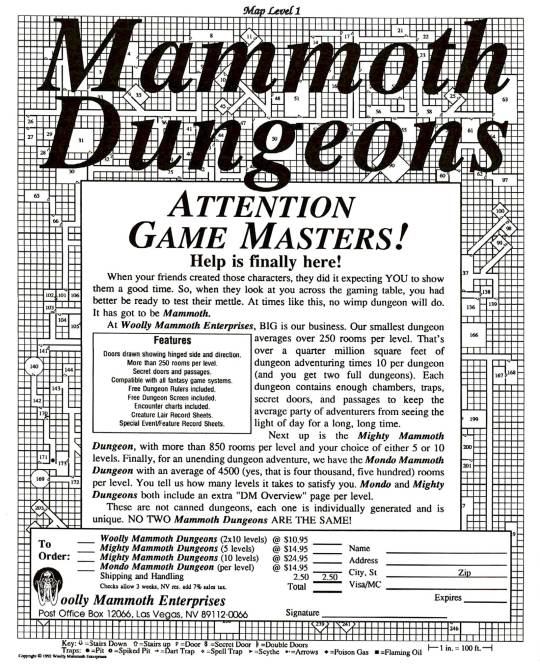
Dungeons & Dungeons & Dungeons & Dungeons -- Ad for Mammoth Dungeons by Woolly Mammoth Enterprises of Las Vegas, NV, offering unique keyed megadungeon maps with up to 4500 rooms per level (from Dungeon magazine 41, May/June 1993)
#D&D#Dungeons & Dragons#dnd#dungeon map#megadungeon#Dungeon magazine#game ad#Mammoth Dungeons#Woolly Mammoth Enterprises#Dungeons and Dragons#1990s
89 notes
·
View notes
Text
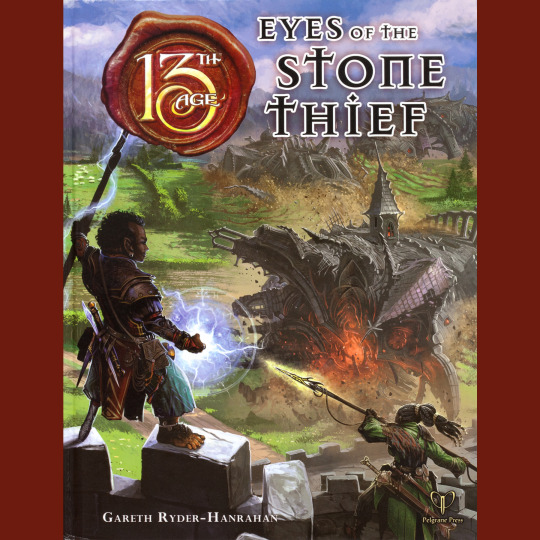
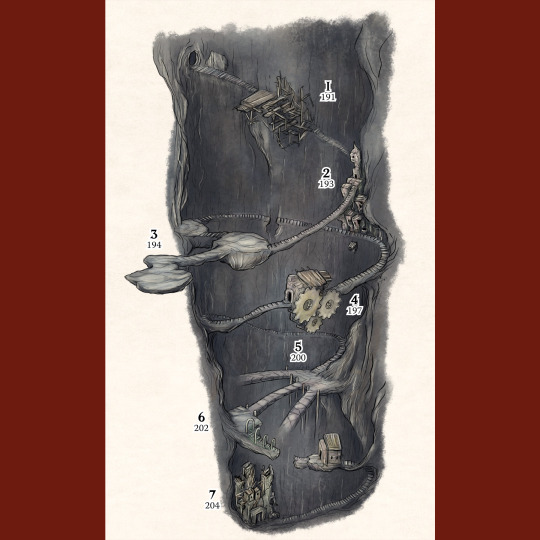
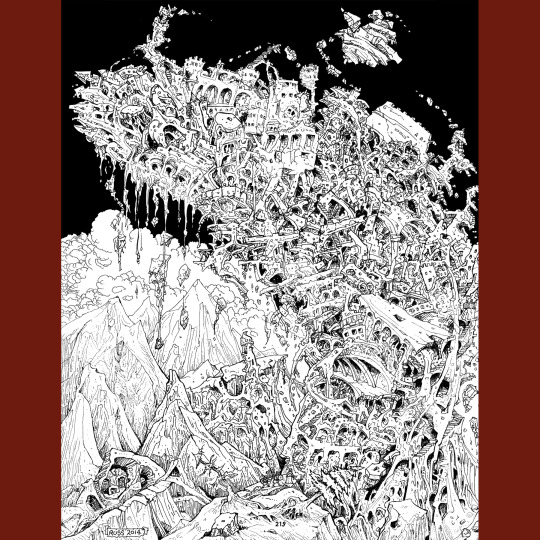


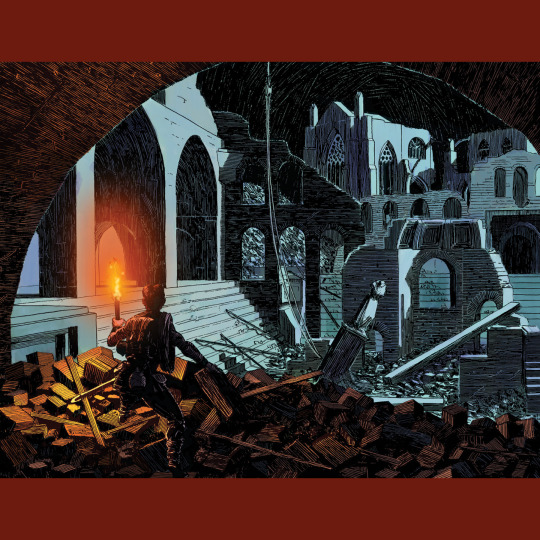

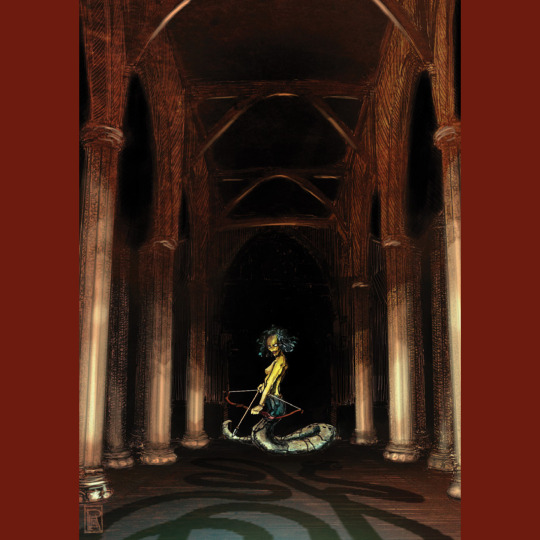
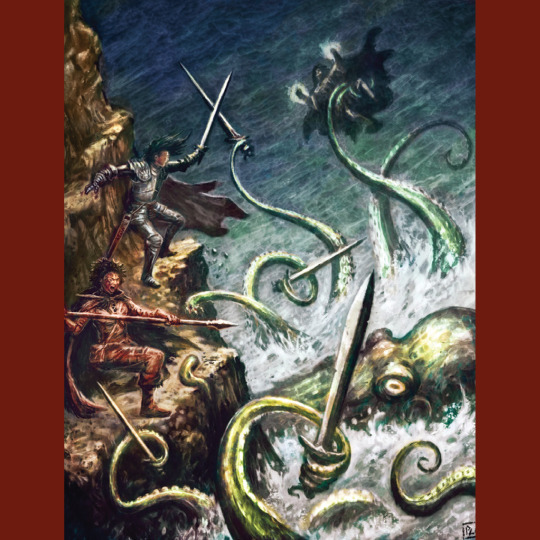

Eyes of the Stone Thief (2014) takes the idea of high concept megadungeons and launches it into the stratosphere. Most dungeons are hostile environments, but passive ones. Really, their dangers threaten player characters because of the forward movement of those players characters, their own initiative and desire to explore. Players trip traps, encounter inhabitants, and ultimately have themselves to blame for any injuries and deaths they suffer. Stone Thief isn’t content to react to players. Instead, the book wonders what a dungeons would be like if it was actively hostile.
In the game 13th Age, the dungeon is made more plausible by presenting them as living things — they can move around, they can eat, they have intelligence. The Stone Thief is the oldest, cleverest and most malevolent of its kind. It offers what perhaps the epitome of the various answers to the question, “What is a dungeon?” Answer: A thing that eats adventurers.
And many other things as well! The illogic of the dungeon space, that so often combines disparate environments in close, baffling proximity, is here explained by how the Stone Thief feeds: namely, by consuming buildings, landmarks and other structures, which it then incorporates in some manner into its interior space. This goes for creatures and people, too. When it surfaces, the Stone Thief unfolds, creating a new arrangements of places and monsters each time. When it dives, it contracts, flattening spaces, putting residents in stasis and destroying intruders.
Again, just an astounding concept. Reading through the book is one delight after another. The art is great throughout, though there is no clear credit and I am not really familiar with anyone other than Russ Nicholson. Herwin Wielink’s cartography is the real star, though, imbuing the idea of dungeons spaces as living anatomy a real vividness.
#roleplaying game#tabletop rpg#dungeons & dragons#rpg#ttrpg#d&d#Megadungeon#13th Age#Eyes Of The Stone Thief
151 notes
·
View notes
Text

Brinefathom Caves Level 6, Week 5
6.45: The Painting Souls
6.46: The Golden Closet: Various rollers, brushes, and other painting implements, all sticky with hot molten gold. The lot is worth 100 gp. Empty.
6.47: The Lake of Gold
6.48: The Unholy Fountain: Grinning devil-face fountain spews unholy water into a basin. Empty.
6.49: The Fascinating Ice
6.50: The Fountain of Youth
6.51: The Tortured Souls
6.52: The Furry Statue: Lifelike statue of a fiendish ape, all covered in dark red fur—even the pedestal and surrounding floor. A creature who touches any furry surface must make a Constitution saving throw or be cursed to also sprout dark-red fur all over their body (no game effect) until the curse is removed. Empty.
6.53: The Bloody Chains: Southern slab door connected to four chains, which are strung through the ceiling and hang down in a east-west line in the center of the room. Their dangling ends end in sharp hooks coated with old dried blood. Slab door only opens when all chains are embedded in creatures’ flesh and pulled, dealing piercing damage—if each chain does not deal damage, the door will not open, no matter how hard the chains are otherwise pulled. Empty.
6.54: The Chains of Prophecy
17 notes
·
View notes